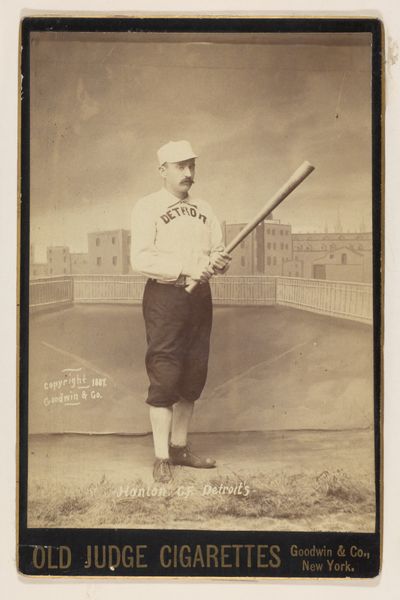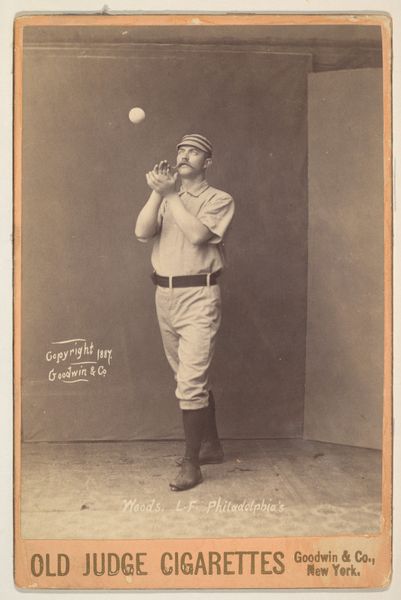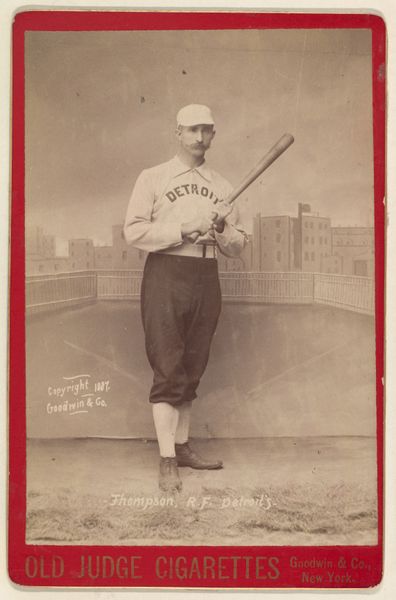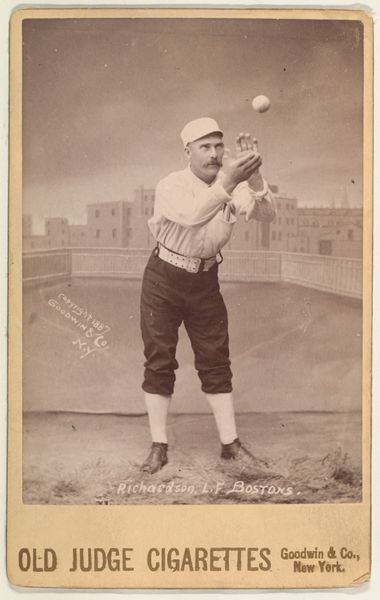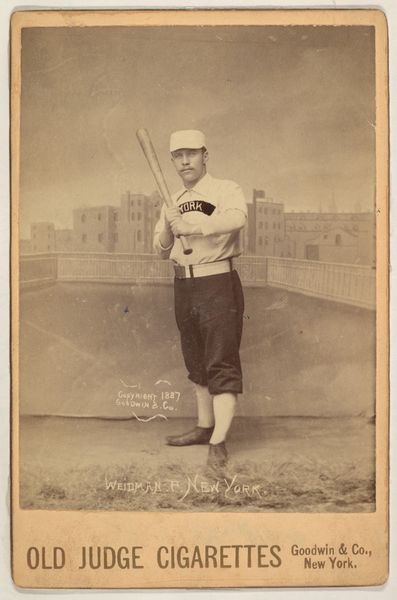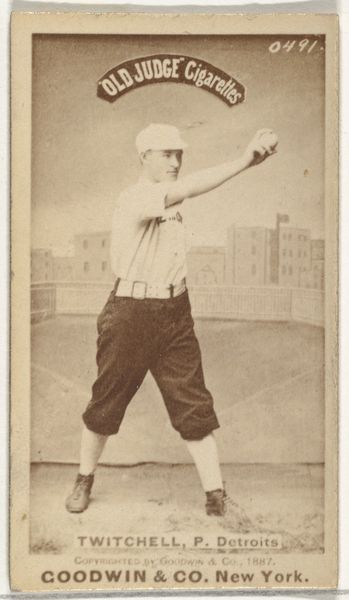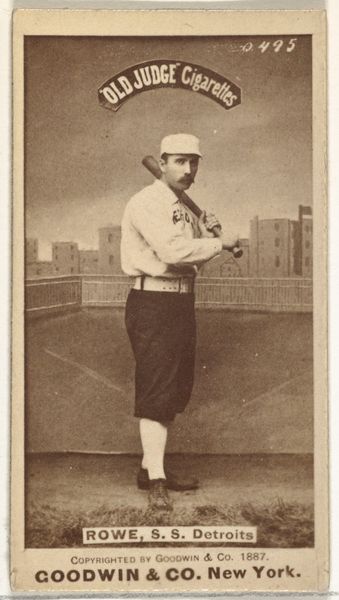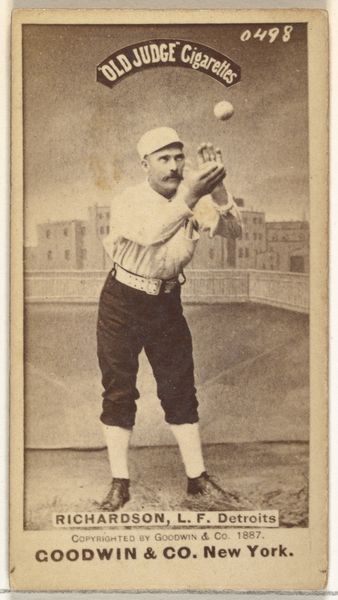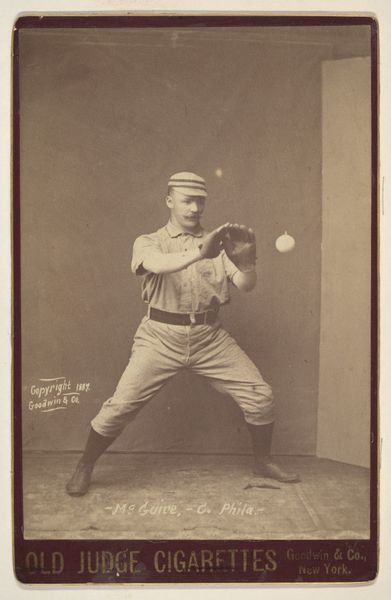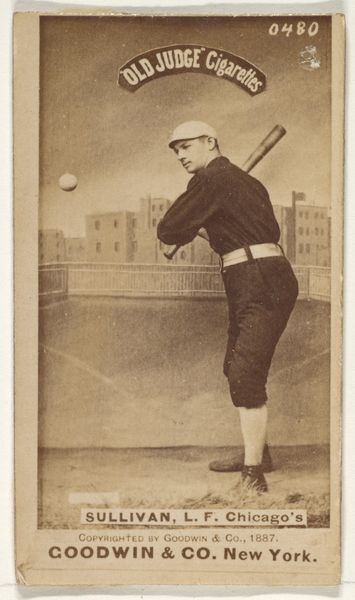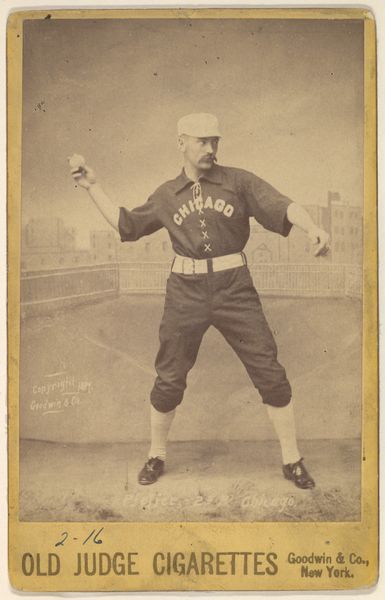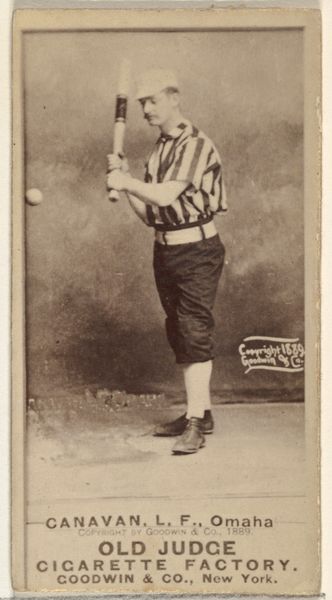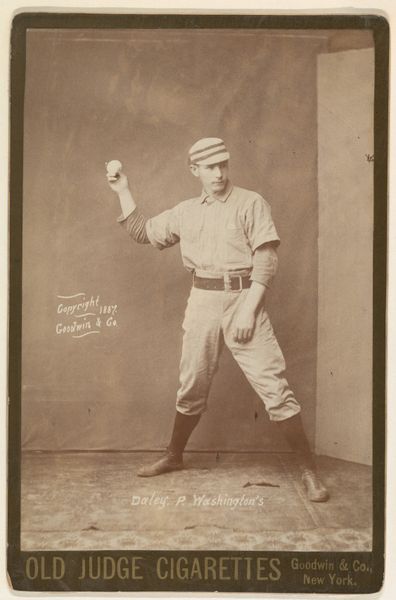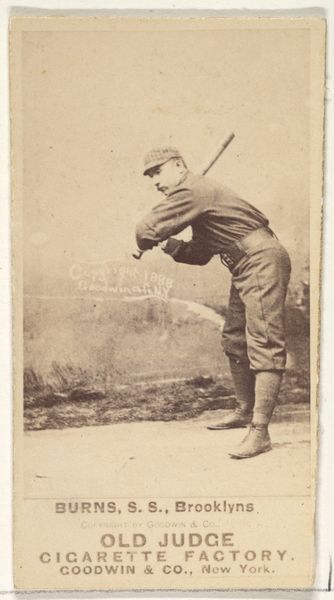
Rowe, Shortstop, Detroit, from the series Old Judge Cigarettes 1887
0:00
0:00
print, photography
#
portrait
#
photo of handprinted image
#
aged paper
#
toned paper
#
16_19th-century
#
photo restoration
#
pictorialism
# print
#
baseball
#
photography
#
historical photography
#
19th century
#
men
#
athlete
Dimensions: sheet: 6 1/2 x 4 3/8 in. (16.5 x 11.1 cm)
Copyright: Public Domain
Editor: This is a photographic print titled "Rowe, Shortstop, Detroit, from the series Old Judge Cigarettes," created in 1887 by Goodwin & Company. It looks like an advertisement card, sepia-toned with baseball player Rowe posed with a bat and ball. What immediately strikes me is how staged and formal it seems, from the backdrop to the player's stance. What do you see in this piece? Curator: The photographic surface is noticeably textured, perhaps gelatin silver, adding a tangible dimension. Note how the composition directs the eye: Rowe occupies the central vertical axis. His posture, a rigid diagonal, opposes the softer curve of the illustrated background. Observe how the subtle contrast emphasizes the texture of the bat, connecting him to the sport through materiality. The limited tonal range – the dominance of sepia - desaturates, encouraging viewers to contemplate the print as a historical document and artistic rendering simultaneously. Editor: So, you're suggesting the sepia tone, beyond being a product of its time, also influences how we interpret the photograph now? Curator: Precisely. The print’s physical state – its aged quality and the visible texture – become inseparable from its content. The "Old Judge Cigarettes" banner functions as an additional formal element, framing the scene and adding another layer to our understanding. Editor: It's interesting how much can be gleaned just by analyzing the print itself without considering any external historical factors. Thank you. Curator: Indeed. Paying close attention to these intrinsic elements reveals the calculated decisions of the artists, giving way to the interpretation of the piece.
Comments
No comments
Be the first to comment and join the conversation on the ultimate creative platform.
